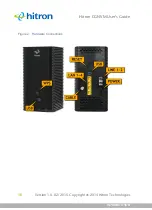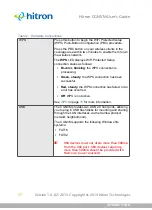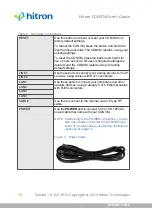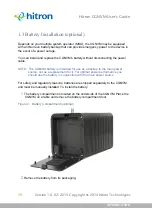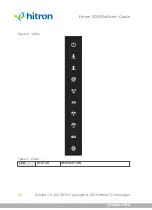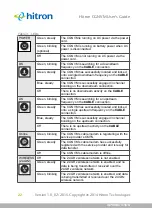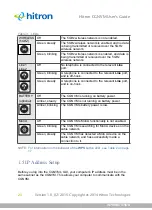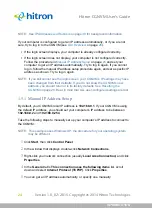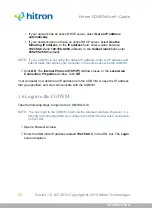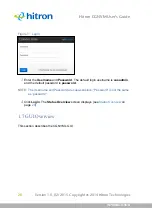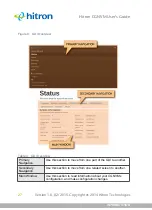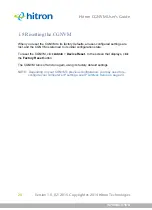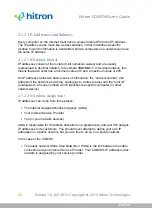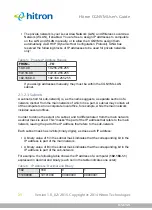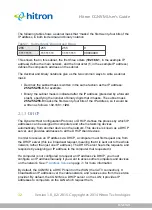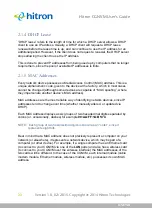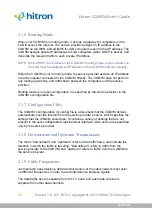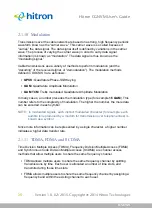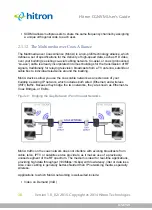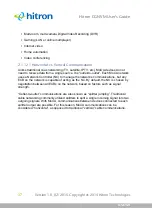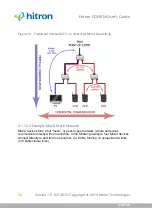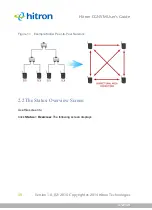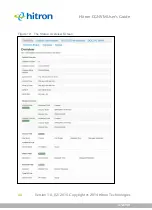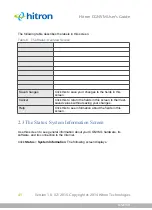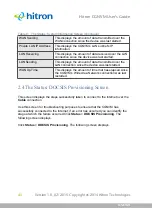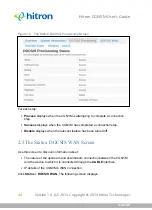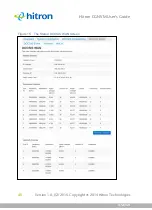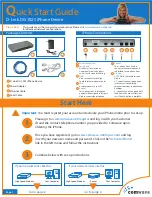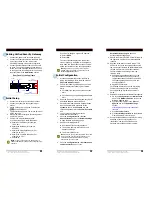
STATUS
Version 1.0, 02/2015. Copyright 2012 Hitron Technologies
30
Version 1.0, 02/2015. Copyright 2014 Hitron Technologies
30
Hitron CGNVM User’s Guide
2.1.2
IP Addresses and Subnets
Every computer on the Internet must have a unique Internet Protocol (IP) address.
The IP address works much like a street address, in that it identifies a specific
location to which information is transmitted. No two computers on a network can have
the same IP address.
2.1.2.1
IP Address Format
IP addresses consist of four octets (8-bit numerical values) and are usually
represented in decimal notation, for example
192.168.1.1
. In decimal notation, this
means that each octet has a minimum value of 0 and a maximum value of 255.
An IP address carries two basic pieces of information: the “network number” (the
address of the network as a whole, analogous to a street name) and the “host ID”
(analogous to a house number) which identifies the specific computer (or other
network device).
2.1.2.2
IP Address Assignment
IP addresses can come from three places:
The Internet Assigned Numbers Agency (IANA)
Your Internet Service Provider
You (or your network devices)
IANA is responsible for IP address allocation on a global scale, and your ISP assigns
IP addresses to its customers. You should never attempt to define your own IP
addresses on a public network, but you are free to do so on a private network.
In the case of the CGNVM:
The public network (Wide Area Network or WAN) is the link between the cable
connector and your Internet Service Provider. Your CGNVM’s IP address on this
network is assigned by your service provider.

